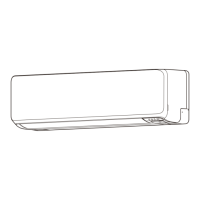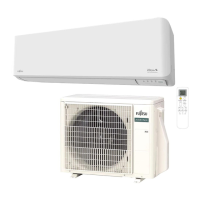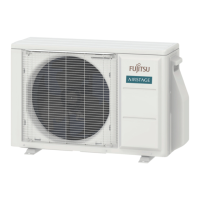8. Various protections
8-1. Discharge gas temperature over-rise prevention control
The discharge gas temperature sensor (discharge thermistor: outdoor unit side) detects the dis-
charge gas temperature.
• When the discharge temperature becomes higher than the trigger condition, the compressor fre-
quency is decreased as the table below, and it continues to decrease until the discharge tempera-
ture becomes lower than the trigger condition.
• When the discharge temperature becomes lower than the release condition, control of compressor
frequency is released.
• When the discharge temperature becomes higher than the compressor protection temperature,
the compressor is stopped and the indoor unit indicator lamp starts blinking.
Trigger condition 219.2°F (104°C)
Compressor frequency -20 rps/120 seconds
Release condition 213.8°F (101°C)
Compressor protection temperature 230.0°F (110°C)
8-2. Anti-freezing control (cooling and dry mode)
The rotation number of compressor is decrease in cooling and dry mode when the indoor unit heat
exchanger temperature sensor detects the temperature lower than the trigger condition.
When the indoor unit heat exchanger temperature reaches release condition, the anti-freezing con-
trol is stopped.
Trigger condition 39.2°F (4°C)
Release condition
Outdoor temp. ≥ 50°F (10°C)*
1
Outdoor temp. ≥ 53.6°F (12°C)*
2
44.6°F (7°C)
Outdoor temp. < 50°F (10°C)*
1
Outdoor temp. < 53.6°F (12°C)*
2
55.4°F (13°C)
*1: During the outdoor temperature dropping
*2: During the outdoor temperature rising
8-1. Discharge gas temperature over-rise prevention control - (04-31) - 8. Various protections
CONTROL AND
FUNCTIONS
CONTROL AND
FUNCTIONS

